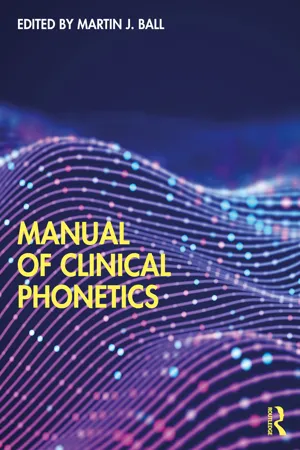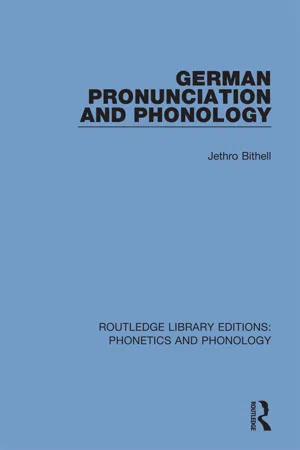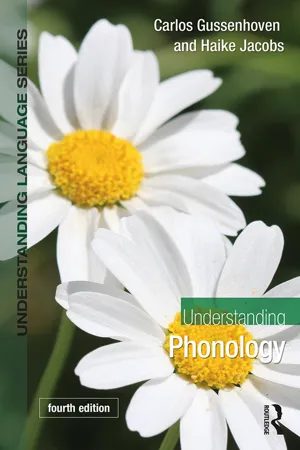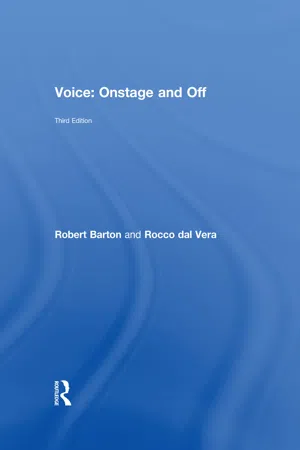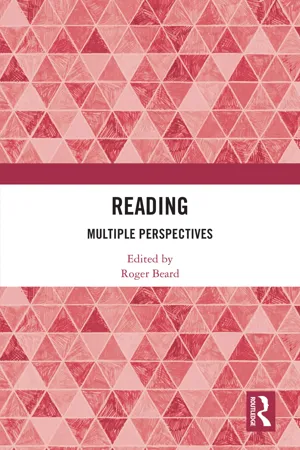Languages & Linguistics
International Phonetic Alphabet
The International Phonetic Alphabet (IPA) is a standardized system of phonetic notation used to represent the sounds of spoken language. It provides a set of symbols that correspond to specific speech sounds, allowing linguists, language learners, and speech pathologists to accurately transcribe and study the pronunciation of words in any language.
Written by Perlego with AI-assistance
10 Key excerpts on "International Phonetic Alphabet"
- eBook - ePub
Second Language Learning and Language Teaching
Fifth Edition
- Vivian Cook(Author)
- 2016(Publication Date)
- Routledge(Publisher)
For over a century the solution for researchers and teachers in much of the world has been the International Phonetic Alphabet (IPA), which supplies symbols for all the sounds that could occur in human languages. The full version is given in many books and the latest official revision can be downloaded from the International Phonetic Association (https://www.internationalphoneticassociation.org/content/full-ipa-chart); there is also an online version at UCLA that demonstrates how the sounds are pronounced (http://hctv.humnet.ucla.edu/departments/linguistics/VowelsandConsonants/course/chapter1/chapter1.html). A phonetic alphabet then provides a way of showing the sheer sounds of language, known as phonetics. However any particular language only uses a small selection of these sounds for its sound system, its phonology. So the version of IPA normally encountered in teaching is the one used for transcribing a particular language, for instance the phonemes of English, included somewhere in most coursebooks. This is different from a transcript that records sheer phonetic sounds, independently of the language involved, and so uses the full IPA chart; usually this type of transcript is put in square brackets, for example [desk]. A transcript of the significant sounds in the phonological systems of a particular language is usually given in slant brackets, say English /desk/. Opening Activity Carry out the following test. Note: it only covers the consonants of English as the vowels are more complicated to test and have far more variations from one native speaker to another. Box 4.2 The Instant Accent Test for English Consonants A one-page printable version of this is on the website (http://homepage.ntlworld.com/vivian.c/SLA/CooksPhontest.htm). Find a non-native speaker of English and get them to read the following words aloud rapidly. Point to words at random rather than in sequence - eBook - ePub
Everyday Linguistics
An Introduction to the Study of Language
- Joanne Cavallaro(Author)
- 2023(Publication Date)
- Routledge(Publisher)
CHAPTER 4 PhoneticsThe sounds of EnglishDOI: 10.4324/9780429269059-4First glanceInternational Phonetics Alphabet (IPA):- Voice
- Consonants: place and manner of articulation
- Vowels
- Natural classes V
- Accents
- Prosody
- What’s in a name?
- Local acts of identity
- Sign language phonetics
- Phonetics in other languages
- Acquiring language sounds
INTRODUCTION
Part of knowing any spoken language is knowing its sounds and how they are put together. We will begin here with the sound units of language, examining the meaningfully distinct sounds of English. In the next chapter on phonology, we will use that knowledge to examine how the sound system in English is structured.To do so, we will need something besides letters to indicate sounds, since letters in English are poor at representing sounds. For one thing, one letter can represent more than one sound. How do you pronounce the letter a, for example? It depends; in the word pat it is pronounced differently than in father or late. The letter t can also be pronounced in several different ways—as in pretty, late, or nation. To make the whole thing even worse, one sound can be spelled in a variety of ways; the ee sound can be spelled ee (seed) or ea (lead) or ey (key), among other ways. And some letter combinations hide sound differences. Although we spell them the same, there are really two th sounds in English, the one in think and the one in then.International Phonetic Alphabet
Because there is simply too much inconsistency in our alphabet, we will use a slightly modified version of the International Phonetic Alphabet or IPA, an alphabet designed by linguists to designate a unique symbol for every sound in every language. (You can find and download the full IPA at internationalphoneticalphabet.org.) Here we will be concentrating on English, learning to use those symbols to represent the minimally distinct sounds of English. Other symbols are necessary to represent sounds in other languages, for many of the sounds in other languages differ from similar sounds in English or do not exist in English. We will learn what aspects of the vocal tract are involved in producing those sounds; that is, we’ll be doing phonetics, the study of sounds in human speech. Phonetics includes both acoustic phonetics, the study of the physical properties of speech as sound waves, and articulatory phonetics - eBook - ePub
- Ingo Plag, Sabine Arndt-Lappe, Maria Braun, Mareile Schramm(Authors)
- 2015(Publication Date)
- De Gruyter Mouton(Publisher)
This, however, is exactly what we would like to have when we talk or write about sounds, so that, whenever we use a certain symbol, people know exactly which sound we are talking about. Therefore phoneticians have established transcription systems which have a separate symbol for each sound. The most well-known and most standardised transcription system is the International Phonetic Alphabet (IPA). You may already be familiar with phonetic transcription from dictionary entries or the vocabulary parts of your foreign language textbooks in school, where the IPA or a similar system of phonetic symbols is used to indicate the pronunciation of words. Many (though not all) of the symbols in fact look like ordinary letters, but it is important to keep in mind that, unlike letters, phonetic symbols directly represent sounds in a one-to-one fashion. In order to indicate which kind of unit we are talking about, we use two different sets of brackets: angled brackets “< >” for letters, and brackets “[ ]” for sounds. Thus, for instance, the orthographic representation of the word referring to a piece of garment you wear on your feet is , but the representation of its sounds, its ‘phonetic representation’, is [s k]. In the latter case each symbol represents uniquely one sound. Of course, if you want to use the IPA symbols, you need to be familiar with the correspondences between symbols and sounds. Which sound does a given symbol refer to? There is no way of telling just from the look of it. You can think about phonetic symbols as labels of some kind, not unlike labels you use for musical notes, for instance. The names we use to distinguish different notes, such as ‘a’, ‘g’, or ‘d’, enable us to talk about these notes without giving complicated examples and explanations - eBook - ePub
Linguistics for Language Teachers
Lessons for Classroom Practice
- Sunny Park-Johnson, Sarah J. Shin(Authors)
- 2020(Publication Date)
- Routledge(Publisher)
ief . Additionally, the English alphabet is not able to accurately represent sounds that are not in English, such as the [ħ] sound in Arabic or the click sounds in Xhosa.A phonetic alphabet solves these problems by representing each sound in human speech with a single symbol. Using a phonetic alphabet enables us to transcribe spoken language consistently and accurately. In this book, we will use the International Phonetic Alphabet (IPA), found in the inside back cover of this book (IPA Chart, 2015). The IPA is applicable to all spoken human languages and can be used to describe the sounds of any language. The symbols in the IPA are enclosed in slashes / / or brackets [ ] to indicate that the transcription is phonetic. The IPA does not represent the spelling system of any particular language.2.3 Articulatory Phonetics: How Sounds Are Produced
Most speech sounds are made by pushing air out of the lungs. Try talking while breathing in and you will notice it’s much more difficult than talking while breathing out. Air from the lungs goes up the trachea (also known as the windpipe) and into the larynx, where it passes through the space between the vocal cords, called the glottis. After the air passes through the glottis, it goes through the tube in the throat called the pharynx. Then the air goes out of the oral cavity through the mouth, or out of the nasal cavity through the nose. Sounds made when the vocal cords are vibrating are called voiced, while those made when the vocal cords are apart are called voiceless. To hear the difference between a voiced and a voiceless sound, put your fingertips lightly on your throat and say a long s sound (like a snake). You should feel no vibration as the vocal cords are separated to make this voiceless sound. Now with your fingertips still on your throat, say a long z - eBook - ePub
- Evangeline Machlin(Author)
- 2013(Publication Date)
- Routledge(Publisher)
or!An alphabet consistent with the sounds of speech has been invented however, the International Phonetic Alphabet, or IPA. This alphabet uses one symbol for each sound-element, or phoneme. It is the one used by Professor Higgins of Pygmalion and My Fair Lady fame, when he writes down Eliza’s Cockney speech. Spelling out speech with the IPA is called phonetic transcription. When Professor Higgins reads aloud his phonetic transcription of what Eliza has just said, he reproduces her speech exactly. What a tool this may be for an actor! Had Higgins been one, he could have mastered for the stage any dialect or accent a role required. You can use phonetic transcription for this end, and you can also use it to discover errors of pronunciation in your own speech, a necessary step toward correcting them. Phonetic transcription is, in fact, articulating with a pencil. Knowing how to do it helps you to articulate brilliantly by allowing you to analyze difficult words and phrases into the exact sounds that compose them.Begin by mastering the IPA. Memorize it, and use it in phonetic transcription. The section of this chapter called Phonetic Transcription and Pronunciation, which you should refer to constantly, will guide you through the difficulties you may encounter. Follow the graded exercises, which call for the transcription of individual sounds, then of nonsense syllables, then of sentences, and finally of connected speech. Simultaneously, work at the corresponding exercises in articulation. These call for practice of individual sounds and syllables, then of short verses, and so to longer patter songs, and finally to continuous passages of prose and poetry. At all times you should use your growing knowledge of sound elements to assist you in solving problems of articulation as they arise. - eBook - ePub
- Martin Ball, Martin J. Ball(Authors)
- 2021(Publication Date)
- Routledge(Publisher)
PART IIIPhonetic transcription
IntroductionPart III of the Manual contains six chapters on phonetic transcription. The ability to transcribe speech into phonetic symbols has long been, and still is, the gold standard for speech-language pathologists and clinical phoneticians wishing to make a record of disordered speech. Since the beginning of interest in speech disorders among phoneticians and the beginning of the profession of speech therapy the International Phonetic Alphabet (IPA, 1999) has been the only accepted form of phonetic transcription.However, it was not perhaps a foregone conclusion that IPA would be the transcription method for clinical phoneticians. Indeed, an earlier system came out of the study of hearing impairment, in the form of Bell's Visible Speech (Bell, 1867). In Bell's system, phonetic symbols are created out of a set of sub-symbol shapes. For consonants, these correspond to phonetic features such as place and manner of articulation, voicing and resonance. The vowel symbols consisted of a basic vowel symbol with additions to mark tongue and lip position. Such a system could be very useful for a reader unfamiliar with how to produce a spoken text from traditional written symbols, once they had learnt what each aspect of the composite symbols referred to in articulatory terms. However, as a transcription system there are drawbacks. It takes time to deconstruct a sound phonetically and then draw the relevant combination of sub-symbols and put them together into a correct composite. A trained phonetician does not need to transcribe speech sounds into composite symbols; instead, an arbitrary system such as are found in many alphabetic writing systems will be sufficient. Even in reading Visible Speech, the fact that many aspects of the composite symbols are similar in shape is likely to interfere with the ease of interpretation of the written text. Nevertheless, out of interest, had Visible Speech become the transcription of choice in phonetics or clinical phonetics, the name of this book would be written thus: - eBook - ePub
- Jethro Bithell(Author)
- 2018(Publication Date)
- Routledge(Publisher)
Einführung in die angewandte Phonetik, had appeared in 1914. Since 1922 he has been Professor of Phonetics at the University of Hamburg, and director of the Laboratory for Phonetics.ALPHABETS AND SPELLINGNo one who studies languages can fail to realize that the national alphabets taken together represent a mighty chaos. Some alphabets, it is true, represent a more phonetic notation than others. English is terrible to foreigners because its orthography is so consistently historical. Russian and Portuguese are notorious for their retention of historical symbols for weakened vowels. The Italian alphabet comes nearest to a consistently phonetic transcription of sounds: all letters, even double consonants, are pronounced; the vowels keep their original, sonorous value; and all that would be needed to systematize the phonetic notation would be to replace various digraphs by simple letters (i.e. have k for ch, g for gh) and substitute digraphs for several simple letters ([t∫] for c, [d3] for g). But a rectified Italian alphabet would not provide a full notation for other languages; there would, for instance, be no symbols for sounds lacking in Italian, e.g. [θ, ð X, ɣ, È], Southern English vowels such as a in ‘cat’ and u in ‘dull’, the French and Portuguese nasal vowels. The German alphabet, too, is comparatively phonetic; where the sound values of a symbol differ the difference is usually indicated by position—e.g. final b, d, g must be sounded p, t, k, and length of vowel is usually indicated by some device or other, or known by the consonant that follows it, while accentuation (so incalculable to a beginner in Russian) follows the general rule that the root syllable bears the main stress. But there is occasional inconsistency: e.g. vowel length is indicated in Voigt by adding i, while added i in Duisburg indicates modification (ui =ü). The use of the one symbol ch for [ç] and [x] is illogical, though it is phonetically accurate for Swiss German, in which ch - eBook - ePub
- Carlos Gussenhoven, Haike Jacobs(Authors)
- 2017(Publication Date)
- Routledge(Publisher)
organs of speech is used to refer to parts of the body in the larynx and the vocal tract that are involved in the production of speech. It is a misleading term in that it suggests that we have special physical organs for speaking. This is not so: all our so-called organs of speech have primary biological functions relating to our respiratory system and the processing of food.The pronunciation of words is conventionally represented with the help of phonetic symbols , any such representation being a phonetic transcription. The symbols used in this book are those proposed by the International Phonetic Association (IPA), which can be found on page ix. A phonetic symbol stands for a particular speech sound, or segment , which is defined independently of any language. Phonetic symbols may be accompanied by diacritics , signs which are printed above or below a phonetic symbol or with which the symbol is superscripted, and which specify particular features of pronunciation. For example, in the transcription [kh æt], which indicates the pronunciation of the English word cat , [kh ] represents a [k] which is accompanied by aspiration, a brief [h]-like sound occurring between the [k] proper and the following [æ]. It is not always necessary, or even desirable, to indicate all the features of the pronunciation of a word in a transcription: the transcription [kæt] is often sufficiently informative if the reader knows the language concerned. A transcription that includes a great deal of detail is called narrow .2.2 The Lungs and the Larynx
A crucial requirement for the production of acoustic energy is a mechanism to create an air pressure difference in the appropriate locations in the larynx and the vocal tract. There are a number of ways in which air pressure differences for speech production are created, called airstream mechanisms (Abercrombie 1967). The most commonly used by far is the pulmonic airstream mechanism, and the great majority of speech sounds are produced with the help of increased air pressure created by our lungs. Before we begin to speak, we breathe in, taking in sufficient air to produce an utterance of reasonable length. Instead of simply letting go of the muscular tension and allowing our lungs to collapse, pushing the air from them (which is what we would do if we were breathing normally), we slowly ease up on the tension, thereby slowing down the exhalation phase. This artificially extended period of pressure from our lungs is used to produce speech. Because it is the exhalation phase rather than the inhalation phase that is used, these speech sounds are called egressive . Most languages only have pulmonic egressive sounds. In section 2.8 - eBook - ePub
- Robert Barton, Rocco dal Vera(Authors)
- 2017(Publication Date)
- Routledge(Publisher)
6 Here’s a short sentence transliterated from two different viewpoints:He never could do the waltz in toe shoes. American Dialects7hEE nEH vER kOOd doo THUH wAHlts in tOH shOOzNBC Handbook of Pronunciation8hee NE vər kuud doo th ə wawlts in toh shoozUNIT 3.2.3
Phonetics9This is the notation system most often used by acting conservatories, scholars, and linguists. It is regarded as the “science of speech,” in much the same way that linguistics, acoustics, and audiology are the sciences of language, sound, and hearing. Its disadvantage is that you have to learn new symbols. “My dog has fleas” would look like [maɪ̆ dɒg hæz fliz]. Phonetics has a symbol for everything from a “French R” to the various click sounds of Xhosa. No other system can accurately represent non-English sounds and describe the details of connected speech. It is an essential tool for accent study.The phonetics notation system is internationally standardized, and learning it can open up a world of sounds you might never have known existed.Hold fast the form of sound words.The Bible, Timothy 1:13UNIT 3.3 The International Phonetic Alphabet
The most reliable means for writing sounds is the International Phonetic Alphabet (IPA). It was developed in Victorian England, where the study of linguistics evolved to ease administration of an expanding empire. Around 1867, Alexander Melville Bell (father of Alexander Graham Bell, inventor of the telephone) developed a system called Bell’s Visible Speech, using symbols to show how a sound was created: - eBook - ePub
Reading
Multiple Perspectives
- Roger Beard, Roger Beard(Authors)
- 2022(Publication Date)
- Routledge(Publisher)
The linguistic base of initial reading and spelling in English: a tutorial review
Greg BrooksABSTRACT
This article summarises the linguistic base of initial reading and spelling in English for the benefit of teachers and others engaged in education who need explicit understanding of parts of the linguistic base in order to teach initial literacy accurately. The aspects covered are those most relevant to children entering formal schooling: spoken language as the foundation of literacy; phonetics and phonology; phoneme-grapheme and grapheme-phoneme correspondences; sequencing in phonics teaching; vocabulary, morphology and syntax; and the linguistic effects of reading to children. Several aspects are discussed from two angles, first describing the full system, then summarising where 5-year-olds have reached in their development towards it.Prerequisites
International Phonetic Alphabet (IPA) symbols are used in this article; they are explained in Tables 2 –4 . Phonemes are enclosed in double forward slashes, / /, and graphemes in double angle brackets, < >. ‘Vowel’ and ‘consonant’ refer to phonemes, not letters. Long and short vowels are also defined phonetically, and not by the traditional use of those terms in teaching.Coverage
The purpose of this article is to summarise some of the foundational aspects of the linguistic base of initial reading and spelling in English for the benefit of teachers and others engaged in education who need explicit understanding of parts of the linguistic base in order to teach initial literacy accurately. The aspects covered are those most relevant to children entering formal schooling, namely: spoken language (oracy) as the foundation of literacy; phonetics and phonology; phoneme-grapheme and grapheme-phoneme correspondences; sequencing in phonics teaching; vocabulary; brief notes on morphology and syntax; and the linguistic effects of reading to children (or not). Technical terms are defined in the relevant sections. Some of these aspects are discussed from two angles, first describing the full system, then summarising where 5-year-olds have reached in their development towards it.
Index pages curate the most relevant extracts from our library of academic textbooks. They’ve been created using an in-house natural language model (NLM), each adding context and meaning to key research topics.
Explore more topic indexes
Explore more topic indexes
1 of 6
Explore more topic indexes
1 of 4





